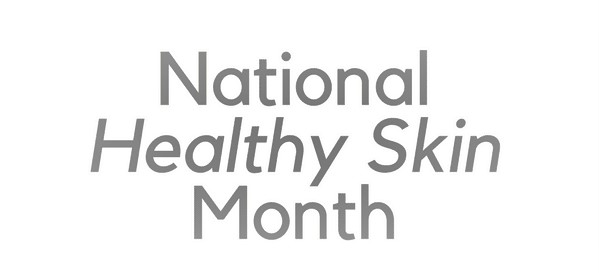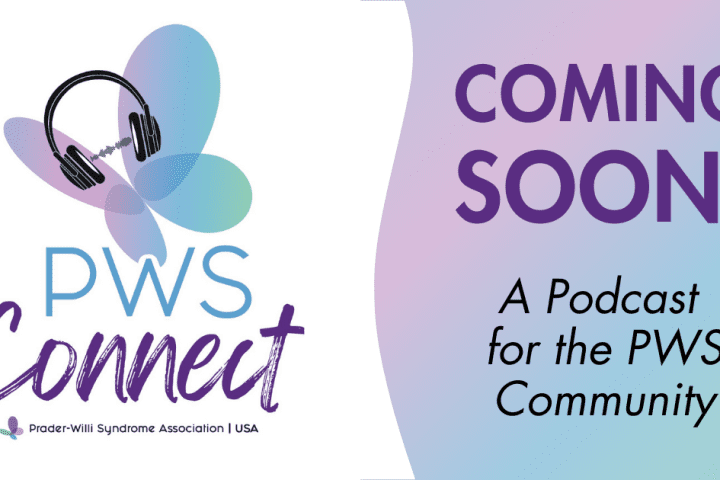Skin picking (also known as Dermatillomania) is one of the most challenging behaviors to manage and minimize in individuals who have Prader-Willi syndrome (PWS). Though not everyone affected by the syndrome will struggle with skin picking, the behavior is thought to impact 80% of those who do. It can be very severe for some and is often a lifelong struggle. Picking behavior can result in infections, scarring, disfigurement and even anemia.
Individuals who struggle with skin picking will pick at any opening of their body including their nose, rectum, and vagina. Researchers and experts in the field of PWS are not sure of the exact cause or reason for skin picking though some feel it might be a compulsive behavior (but not Obsessive-Compulsive Disorder). Others believe it might be a sensory issue, poor impulse control, a bad habit, or anxiety. Researchers have found that when mice are missing part of the PWS gene, they too will irritate and scratch their own skin.
Sensory Integration Disorder
Sensory Integration Disorder (SID) is often found in individuals with PWS who have severe skin picking issues. SID is a neurological disorder that results from the brain’s inability to integrate certain information received from the body’s five basic sensory systems. These sensory systems are responsible for detecting sights, sounds, smell, tastes, temperatures, pain, and the position and movements of the body. The brain then forms a combined picture of this information in order for the body to make sense of its surroundings and react to them appropriately. The ongoing relationship between behavior and brain functioning is called sensory integration (SI), a theory that was first pioneered by A. Jean Ayres, Ph.D., OTR in the 1960s.
Sensory Integration therapy (SIT) has proven helpful in helping to decrease picking behavior. Performed by an occupational or physical therapist, the therapy not only addresses touch sensitivity but sensitivity to all sensory messages, including sound, sight, touch, taste, and smell. Comprehensive approaches using various sensory techniques are introduced over a time and can include a combination of massage and brushing of the skin at frequent intervals. SIT appears to help “rewire” a person’s response to their environment and decrease many negative behavior responses to sensory stimuli.
Prevention / Treatment
There is no uniform treatment or strategy that has proven to help prevent or treat this problem in everyone affected by the behavior. However, many parents and caregivers report substitution, diversion, and supervision can help minimize skin picking. Some advocate ignoring the behavior altogether, however, most caregivers find that very difficult to do.
Many caregivers find it helpful to provide activities that keep hands busy and divert attention away from picking. Some individuals with PWS require close supervision, especially at times when picking behavior increases, typically during times of boredom or inactivity, including watching TV or being alone in a room. Some people must always be supervised even when using the bathroom, taking a shower, and sleeping. The use of gloves or mitts plus all-in-one pajamas and socks might also be helpful. It is also important to keep nails short to help minimize the damage that longer nails can cause. If the cause of picking is anxiety, steps should be taken to address the source of it.
In situations where rectal picking is a problem steps should be taken to prevent and manage constipation, as well as any evidence of hemorrhoids. The use of lubricating ointments applied to the rectum might assist with soothing and healing. Limiting time in the bathroom, supervision, and the use of items to keep hands busy might also be helpful.
Any steps that can be taken to prevent insect bites or contact with poisonous plants should be taken. These can cause skin problems and challenges. Using an insect repellant might help to prevent unwanted bites that can cause itching, irritation, picking and sores. Touching certain plants (poison ivy, poison oak) can also result in severe skin reactions. The American Academy of Pediatrics has advice on choosing skin repellants for children. Go to: www.healthychildren.org/English/safety-prevention/at-play/Pages/Insect-Repellents.aspx
- When hiking or strolling in the woods, the person with PWS should wear long pants and/or long-sleeved shirt.
- Tuck pants into socks so ticks and other insects cannot bite around the ankles.
- If there has been known contact with any of these plants, use care when removing these items of clothing. Plant residue may be left behind. Launder clothing as soon as possible. Shower immediately after exposure to wash residue away.
- Oatmeal soaks are often helpful and soothing.
- Consult a pharmacist or health care professional for use of an anti-itch cream.
- If a tick bite is suspected, watch area closely and consult a health care professional for monitoring.
Some have been successful when using incentives or rewards. Focus on the positive. Do not scold or punish and keep from saying “don’t pick.” People have been rewarded for keeping band aids or other coverings intact. Some have earned points or rewards for getting a sore or wound healed. The ultimate goal is to take steps to prevent further skin picking and enhance wound healing. Dr. Linda Gourash, MD and Dr. Janice Forster, MD have a very useful program to address skin picking in the handout “Skin Picking and Prader-Willi Syndrome” available on the PWSA | USA website.
Wound Care for Severe Cases
Once a wound becomes large, deep or very problematic, the challenge becomes preventing infection and severe tissue damage. Cases of severe cellulitis, bone infections, as well as severe scarring have been seen. Wound care specialists should be called upon to advise and treat these situations. Most recommend the use of antibiotics (both oral and topical ointments). Ointments provide an extra layer of protection. The use of gauze dressings has served as an extra barrier. Unna boots have also been tried especially for wounds in the leg and foot. An Unna’s boot is a special gauze bandage, which is more commonly used for the treatment of venous stasis ulcers and other venous insufficiencies of the leg. The gauze contains a thick, creamy mixture of zinc oxide, calamine, acacia, glycerin, castor oil and white petrolatum to promote healing.
Medications
In severe cases of skin picking, there have been some individuals who have benefited from the use of medications that have helped to cut back (but typically does not eliminate) skin picking behavior. There has been some research to suggest that the use of medications has helped to decrease extreme picking behavior. Just as with all medications, it may help some, but not all.
- Topiramte (Topamax) in low doses has been found to be effective in some patients who experience severe skin picking. There has been research to support this by Drs. Shapira, Lessig, Lewis, Goodman and Driscoll in 2004 as well as many anecdotal reports on its use and success.
- N-acetylcysteine has been tested by Drs. Miller and Angulo in 2013 in a pilot research study showing mixed results in decreasing picking. They noted decreased picking in all subjects with some having complete remission of picking with less effect for almost one third of the participants.
Skin picking is a problem that remains a lifelong challenge for many persons with PWS. Any measures to minimize this behavior along with treatments to enhance healing remains a high priority for healthy skin.





 Jennifer Bolander has been serving as a Special Education Specialist for PWSA (USA) since October of 2015. She is a graduate of John Carroll University and lives in Ohio with her husband Brad and daughters Kate (17), and Sophia (13) who was born with PWS.
Jennifer Bolander has been serving as a Special Education Specialist for PWSA (USA) since October of 2015. She is a graduate of John Carroll University and lives in Ohio with her husband Brad and daughters Kate (17), and Sophia (13) who was born with PWS. Perry A. Zirkel has written more than 1,500 publications on various aspects of school law, with an emphasis on legal issues in special education. He writes a regular column for NAESP’s Principal magazine and NASP’s Communiqué newsletter, and he did so previously for Phi Delta Kappan and Teaching Exceptional Children.
Perry A. Zirkel has written more than 1,500 publications on various aspects of school law, with an emphasis on legal issues in special education. He writes a regular column for NAESP’s Principal magazine and NASP’s Communiqué newsletter, and he did so previously for Phi Delta Kappan and Teaching Exceptional Children. Evan has worked with the Prader-Willi Syndrome Association (USA) since 2007 primarily as a Crisis Intervention and Family Support Counselor. Evans works with parents and schools to foster strong collaborative relationships and appropriate educational environments for students with PWS.
Evan has worked with the Prader-Willi Syndrome Association (USA) since 2007 primarily as a Crisis Intervention and Family Support Counselor. Evans works with parents and schools to foster strong collaborative relationships and appropriate educational environments for students with PWS. Dr. Amy McTighe is the PWS Program Manager and Inpatient Teacher at the Center for Prader-Willi Syndrome at the Children’s Institute of Pittsburgh. She graduated from Duquesne University receiving her Bachelor’s and Master’s degree in Education with a focus on elementary education, special education, and language arts.
Dr. Amy McTighe is the PWS Program Manager and Inpatient Teacher at the Center for Prader-Willi Syndrome at the Children’s Institute of Pittsburgh. She graduated from Duquesne University receiving her Bachelor’s and Master’s degree in Education with a focus on elementary education, special education, and language arts. Staci Zimmerman works for Prader-Willi Syndrome Association of Colorado as an Individualized Education Program (IEP) consultant. Staci collaborates with the PWS multi-disciplinary clinic at the Children’s Hospital in Denver supporting families and school districts around the United States with their child’s Individual Educational Plan.
Staci Zimmerman works for Prader-Willi Syndrome Association of Colorado as an Individualized Education Program (IEP) consultant. Staci collaborates with the PWS multi-disciplinary clinic at the Children’s Hospital in Denver supporting families and school districts around the United States with their child’s Individual Educational Plan. Founded in 2001, SDLC is a non-profit legal services organization dedicated to protecting and advancing the legal rights of people with disabilities throughout the South. It partners with the Southern Poverty Law Center, Protection and Advocacy (P&A) programs, Legal Services Corporations (LSC) and disability organizations on major, systemic disability rights issues involving the Individuals with Disabilities Education Act (IDEA), Americans with Disabilities Act (ADA), and the federal Medicaid Act. Recently in November 2014, Jim retired.
Founded in 2001, SDLC is a non-profit legal services organization dedicated to protecting and advancing the legal rights of people with disabilities throughout the South. It partners with the Southern Poverty Law Center, Protection and Advocacy (P&A) programs, Legal Services Corporations (LSC) and disability organizations on major, systemic disability rights issues involving the Individuals with Disabilities Education Act (IDEA), Americans with Disabilities Act (ADA), and the federal Medicaid Act. Recently in November 2014, Jim retired.